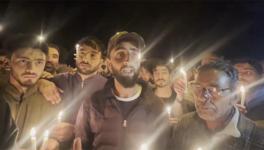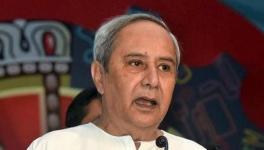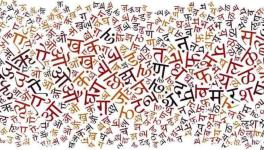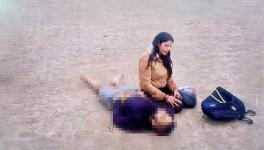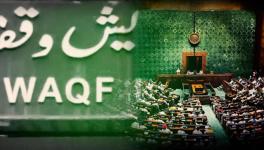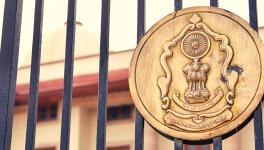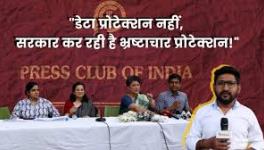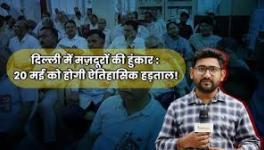Is an All-India Plan Underway to Foment Communal Conflicts?
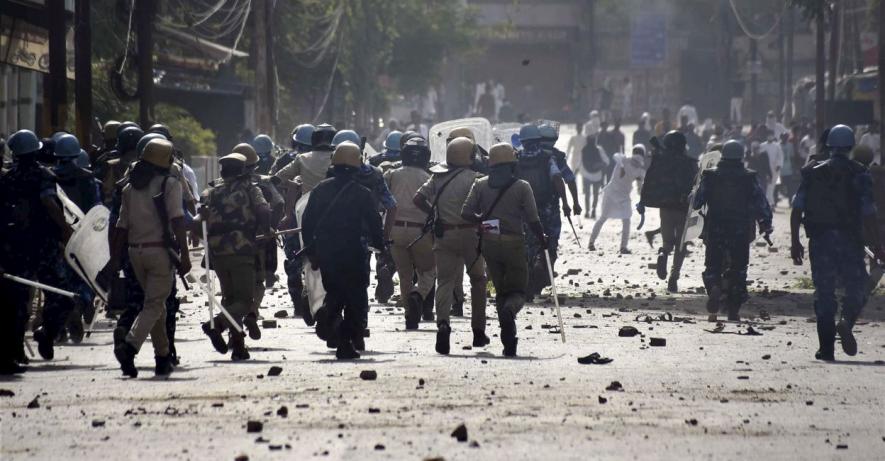
Image Courtesy: PTI
"...I am told Hindutva activists have a plan of creating trouble. They have got a number of them dressed as Muslims and looking like Muslims who are to create trouble with the Hindus by attacking them.. ...The result of this kind of trouble amongst the Hindus and Muslims will be to create a conflagration.’’
[Extracts of a letter, written by Dr Rajendra Prasad on March 14, 1948, cited in Nehru-Patel: Agreement within Differences, Select Documents and Correspondence, edited by Neerja Singh, Page 43]
'How Hindutva activists plan to foment communal trouble?'
It was the year 1948 and Dr Rajendra Prasad, who later became the first President of India, wrote a letter to the first Home Minister of independent India, Sardar Vallabhbhai Patel, about the plan of Hindutva activists to foment trouble in the newly independent country. As per reports that he had received from different sources, Prasad wrote how these Hindutva supremacists get dressed up as Muslims and 'looking like Muslims' create trouble with Hindus by attacking them.'
Much time has passed since the time letter was written, but every now and then, this template, created and developed by Hindutva Supremacist formations during the Partition violence and later, is active with the aim to communalise and polarise the society further.
As the nation is trying to come to grips with post- Pahalgam terrorist attack fallout, which witnessed killing of 26 innocent tourists, reports are coming from different parts of the country that mischievous forces have become active to foment trouble at the ground level against sections of Indian society itself.
The recent arrest of the duo, Chandan Malakar (30) and Progyajit Mondal (45), active members of a political party and associated with a fringe outfit called Sanatani Ekta Manch, for putting a Pakistani flag in the toilet of the Akbarpur railway station near North Parganas is a case in point. No doubt it was part of a conspiracy hatched with the intention of fomenting communal divide in Bengal.
As they have confessed to the police, the duo had plans to write Hindustan Murdabad and Pakistan Zindabad near the posters which they pasted in the toilet of Akbarpur station and had expected to create a riot-like situation.
With the perpetrators of this criminal act behind bars, it is hoped that serious action will be taken against them. Apart from charging them with the act of treason and other penal provisions, the Bengal Police will hopefully spare no efforts to reach the masterminds of this operation. It would be height of political naivete if one thinks that the duo were acting on their own, some great planning must have gone behind this operation and some key leader of the Hindutva brigade would be handling this operation.
The idea is to precipitate division in the Indian society on the basis of religion, when the nation is trying to focus itself on the terrorist killings of innocent tourists at the behest of Pakistan and is keen to 'teach it a lesson of the lifetime'. (This article was written before Operation Sindoor)
The large-scale conspiracy behind this incident cannot be brushed away easily. Looking at the fact that such incidents are not one-off and similar reports have appeared in national and regional dailies, especially from Bharatiya Janata Party-ruled states, we will have to remain extra vigilant.
Look at this report from Rishikesh (Uttarakhand) where Pakistani flags suddenly appeared on the streets at night and there was a large gathering of protesters against this provocative action where a police officer himself declared that "[P]akistani flags were brought by some protesters only."
Police officer Sandeep Negi revealed that the Pakistani flags were brought by some protesters. They had brought these flags to protest against the Pahalgam terror attack and expressed their anger through those, he said. "Initially, it appeared that the flags were brought to the road by some unidentified person. But later during investigation it surfaced that the flags were targeted by some locals who had protested against the terror attack," he further added...
This report from Kalaburgi, Karnataka, is no less disturbing which tells how '[s]ix Bajrang Dal activists detained for pasting Pakistan flag stickers condemning terror. '
Tensions flared in Kalaburgi on Friday morning after stickers bearing the image of the Pakistan flag were found pasted on roads at multiple junctions, including Jagat Circle and Saath Gumbad. The act, initially attributed to miscreants, was later claimed by members of the Bajrang Dal, a Hindu nationalist organisation, as a protest against the recent terror attack in Pahalgam, Jammu and Kashmir.
Vadodara in Gujarat witnessed a similar incident few days ago, when Pakistan’s flags pasted on Vadodara Road created a furore in the area. As per the reports,
..Unknown persons had put up Pakistani flag posters on the main public road near Shri Wagheshwari Society, Chandravati Society, and near Karelibaug in the Karelibaug area of Vadodara city. When people learned about this incident, crowds gathered around the area.
Browse the internet or check the next Insta feed and you will be reminded about similar reports from Santa Cruz, Canacona (Goa), etc. which witnessed the use of similar tactics.
No doubt, the above-mentioned reports are a random selection of news and the actual number of incidents, where use of Pakistani flag to create disturbance, might be very large.
What prompted the fanatic elements, basically ideological legatees of the formations who want India to usher into Hindu Rashtra, suddenly resort to the template developed during Partition riots and later?
The fact of the matter is that despite the killings of 26 tourists in Pahalgam by jihadi terrorists, there has not been a spurt in anti-Muslim feelings at the all-India level. Many of the victims of the tragedy, family members of the people killed in the terrorist attack or wives/ daughters of those who were killed, have shared their experiences about the treatment they received at the hands of ordinary Kashmiris or how people risked their own lives to save them, how they sheltered them etc. etc.
Many of these victims themselves have issued public statements appealing to the people to differentiate between terrorists and Kashmiris and Muslims and appealed to people that they should not try to do Hindu- Muslim politics at this juncture.
Perturbed over these statements, the Hindutva trolls have resorted to character assassination of these brave women.
The silence of the Prime Minister and members of his cabinet over the trolling of these Army/Navy wives -- whose husbands were killed in the terrorist attack – is, to say the least, mind numbing.
There is reason to believe that this absence of widespread outrage against religious minorities, especially Muslims - -whom Golwalkar, the second supremo of Rashtriya Swayamsevak Sangh or RSS, used to consider 'internal enemies' -- has prompted these copycat attempts to create communal-riot like situations.
What is worrying that this will not be the first attempt made by elements to precipitate internecine violence.
There are instances galore on how these elements have resorted to similar tactics to create communal riots earlier as well.
Just three ago, the promptness of the Ayodhya police helped nab a group of terrorists who were keen to create a communal riot-like situation in Ayodhya itself, when Eid was approaching. Eleven people from Ayodhya – who were apparently members of one ‘Hindu Yodha Sangathan’ – reportedly tried throwing prohibited meat, torn pages of a holy book and posters with objectionable slogans before mosques and shrines of Gulab Shah Baba.
The CCTV footage from near these mosques – Taatshah Jama Masjid, Masjid Ghosiyana and Kashmiri Mohalla Masjid – when the conspiracy was executed at midnight, also shows that these accused were wearing caps used by Muslims, basically to hoodwink the police and criminalise and stigmatise the community further.
Most of the accused, namely, Mahesh Kumar Mishra, Pratyush Srivastava, Nitin Kumar, Deepak Kumar Gaur alias Gunjan, Brijesh Pandey, Shatrughan Prajapati, and Vimal Pandey are now behind bars and cases have been filed against them.
Read Also: No End to 'Tamas' (Darkness) Around?
Or one can support Yashwant Shinde, who applied to appear as a witness in the district court in the 2006 Nanded bombing case, in which members of Hindutva outfits were allegedly involved. Shinde claimed he was trained for covert operations linked with a larger conspiracy to plant bombs across India. In 2003 and 2004, he alleged, the same group he trained with were behind bombed mosques in Maharashtra’s Jalna, Purna, and Parbhani towns.
It was the early 1970s when Bhisham Sahni, the legendary Hindi writer, had penned the novel Tamas. It looks at the Hindu-Muslim riots in India in the backdrop of the Partition. Its central character is Nathu, who is a Dalit and does the work of removing hides from dead animals. A local politician persuades Nathu to kill a pig; the act is later used to foment a riot in the city.
It has been more than 50 years since the novel was written, but it resonates with today’s India, as it throws light on the 'fault lines' of Indian society and shows the ease with which these can be weaponised.
As we go to the press, reports have appeared in a section of the media that the National Investigation Agency (NIA) has urged a special court in Mumbai to impose the maximum punishment, including death penalty under Section 16 of the Unlawful Activities (Prevention) Act (UAPA), on all seven accused in the 2008 Malegaon bomb blast case. This marks a dramatic reversal from the agency’s earlier position regarding BJP leader and former MP Pragya Singh Thakur and other defendants.
Whether justice will finally be served to them or not is a million-dollar question, but the fact that NIA is of the opinion of a stringent punishment to these perpetrators is a good thing.
Perhaps, it is a warning sign to all such perpetrators who are keen to foment communal disturbances in the country and cause irreversible damage to the secular fabric of the country.
The writer is a veteran independent journalist. The views are personal.
Get the latest reports & analysis with people's perspective on Protests, movements & deep analytical videos, discussions of the current affairs in your Telegram app. Subscribe to NewsClick's Telegram channel & get Real-Time updates on stories, as they get published on our website.









